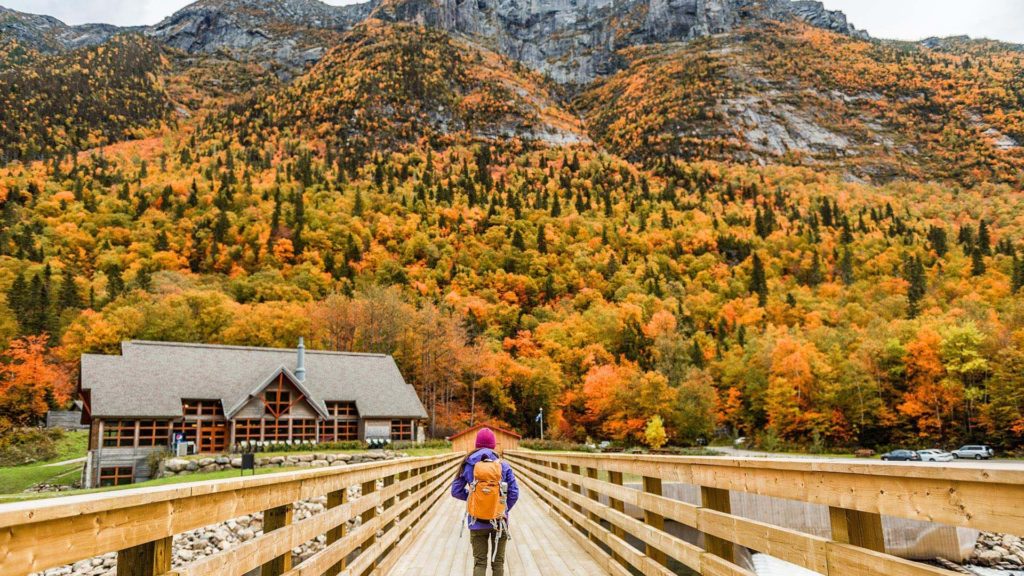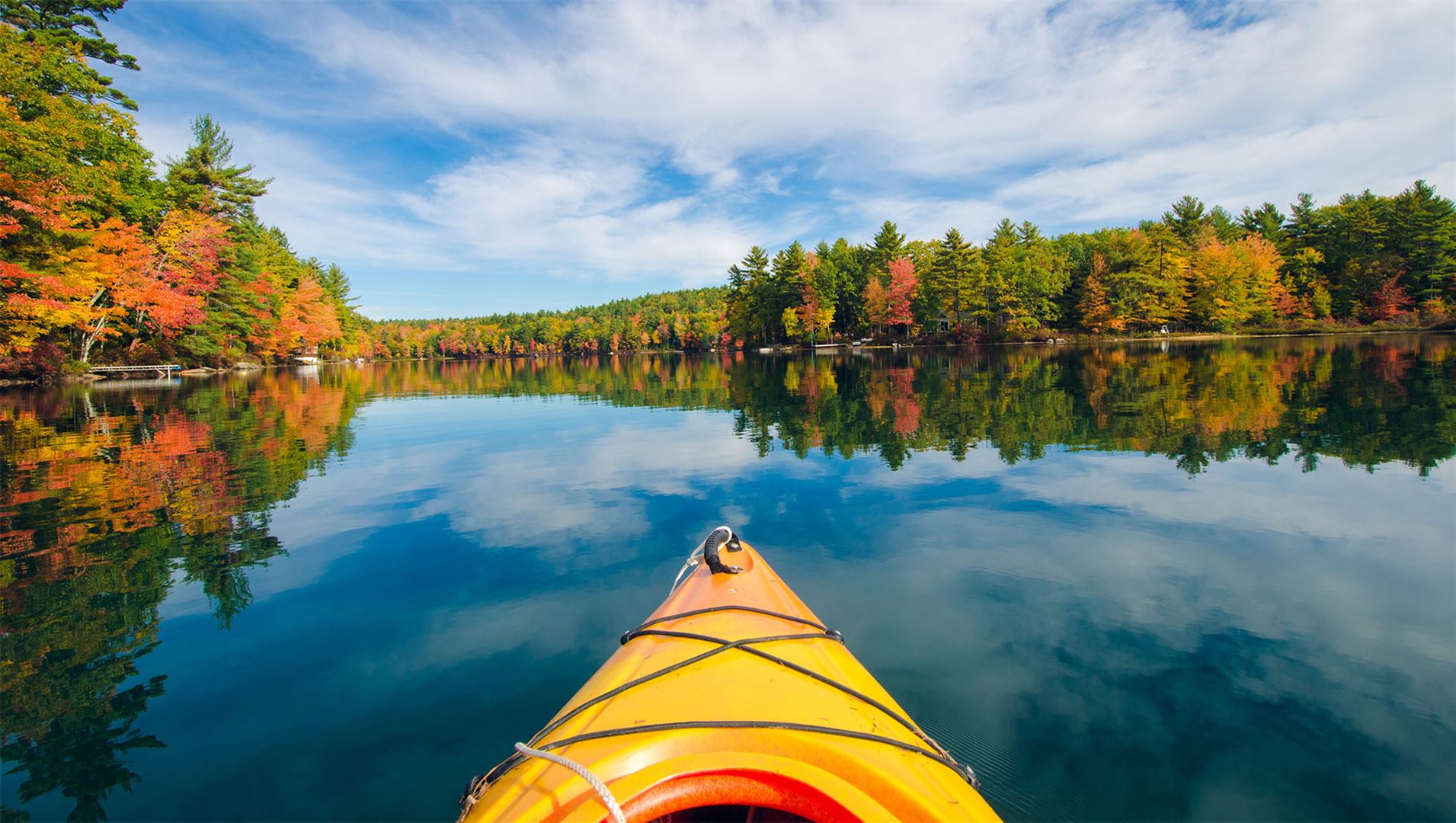Article courtesy of the Affluent Traveler Collection
When it comes to experiencing nature’s most spectacular displays of color, look no further than your very own “backyard.”
With its radiant hues and pumpkin spice lattes, autumn is truly a magnificent season! And some of our favorite areas for experiencing Mother Nature’s explosion of color can be found close to home in New England and Canada.
From gently rolling countryside and picturesque valleys to towering mountains, deep-blue lakes, and coastal areas, there are plenty of unforgettable places and ways to celebrate the magic of the fall season. If you’re looking for an ideal option that’s less stressful and much more enjoyable to driving and seeing the sights on your own, our suggestion is to consider joining an expertly led escorted land tour or a foliage-themed cruise (most cruises are scheduled to resume in 2022).
A KALEIDOSCOPE OF COLORS IN NEW ENGLAND
With its striking lighthouses, plentiful lobsters, and gorgeous landscapes, New England is fun any season, but in autumn it erupts into a blaze of color that draws leaf peepers from across the globe.
Each of the six states that comprise New England – Connecticut, Maine, Massachusetts, New Hampshire, Rhode Island, and Vermont – offers its own mix of natural beauty, historical landmarks, family-friendly festivals, and romantic hideaways. However, if you plan and book accordingly, New England’s compact size allows travelers to explore a lot quicker, especially if you’re short on time.
When it comes to choosing the peak weeks for viewing the changing of leaves in New England, keep in mind that peak fall colors can vary yearly and are affected by wind, temperature, and moisture. Typically the best time to view fall foliage in the region is mid to late September through October. Even if you cannot make one of the peak weeks for foliage color, the shoulder weeks will still provide the same unforgettable experiences.
Nowhere in the U.S. is more stunning than New England in autumn. In the legendary “foliage season,” woods and hillsides transform into a kaleidoscope of colors. Maple, dogwood, oak, and sumac explode into brilliant shades of crimson, golden yellow, bright orange, and deep purple. By foot, car, or boat, this is a sensational time of year in New England.
No matter if you’re traveling the rugged coastline, wooded hills, or mountains, you’re sure to discover plenty of postcard-worthy moments around nearly every bend. Historic Route 1, sometimes known as “Old Post Road,” winds its wanderers through miles and miles of breathtaking panoramas. From south to north, U.S. 1 winds its way from Connecticut, though Rhode Island, Massachusetts, and New Hampshire, and up the Maine coast, in and out of cozy villages, past incredible vistas, and water views, and through some of the most historic spots in the country.
For many leaf enthusiasts, Vermont is the pinnacle of fall foliage perfection. Various types of red maple, pin cherry, mountain ash, and large-tooth aspen trees blanket the hillsides and valleys with vibrant reds, oranges, and yellows. Cruise along with Route 100 or one of the state’s many other scenic drives to spot charming covered bridges, small towns, farms, and creeks. For a more up-close foliage encounter, visit Stowe Mountain and ride the famous gondola all the way to the top. Visitors can also attend fall festivals throughout Vermont for hot cider, comforting meals, and regional favorites like warm cider donuts!
CANADA’S SPECTACULAR AUTUMN SHADES
The fall season in Canada may be brief, but it’s simply amazing. For a short time, you can witness the leaves change to shades of reds, oranges, and yellows before they flutter to the ground. In Eastern Canada, visitors will discover Ontario’s rich bouquets of colors reflected on the calm surface of its many lakes and waterways. To the west in the Canadian Rockies, travelers can observe the contrast of the changing leaves against the cloudless sky, backdropped by mountainous peaks.
Established in 1893, Algonquin Provincial Park is Ontario’s oldest and second-largest park with over 2,900 square miles of thick pine forests, 745 miles of streams and rivers, jagged cliffs, trickling crystal streams, mossy bogs, and 2,400 lakes. Whew!
An easily accessible outdoor gem, this rugged expanse is a must-visit for canoeists, hikers, and piney fresh air seekers. In the fall, Algonquin is celebrated for its fall colors that adorn its maple and hardwood forests. The park is in an area of transition between northern coniferous forests and southern deciduous forests. This unique mixture of forest types, and the wide variety of environments within the park, allows the park to support an uncommon diversity of plant and animal species. It is also an important area for wildlife research. The park is contiguous with several smaller, administratively separate provincial parks that help to protect important rivers in the area, resulting in a larger total protected area.
Algonquin’s size, combined with its proximity to the major urban centers of Toronto and Ottawa, makes it one of the most popular provincial parks in the province and the country. Highway 60 runs through the south end of the park, while the Trans-Canada Highway bypasses it to the north.
Spanning more than 3,000 miles from New Mexico to western Canada, the Rockies mountain range is jaw-dropping in its size. But if you want to experience what many claim to be the most beautiful part of the geological formation, go north to the Canadian Rocky Mountains during autumn and you’ll experience one of the world’s most dazzling natural settings as it becomes awash in color. Due to the glacial formation of its sedimentary rock, the Canadian Rockies appear more massive than the American Rockies, though they are lower in elevation.
If you’re looking for the granddaddy of fall drives, you’ll want to head west of Calgary to the scenic highway appropriately named Icefield Parkway which offers one of the most spectacular drives in the world. Stretched between the towns of Lake Louise and Jasper, the drive is highlighted by cascading waterfalls, sky-blue lakes, and ancient glaciers as you climb over two enormous mountain passes. In the fall the forests deliver a striking combination of reds and gold from late September to early October with poplar, birch, and willow trees leading the way. Conifers of every type including pine, fir, and spruce add contrasting shades of green, but the larch trees steal the show when their needles turn a golden yellow.


comments
share
- Lisell Travel